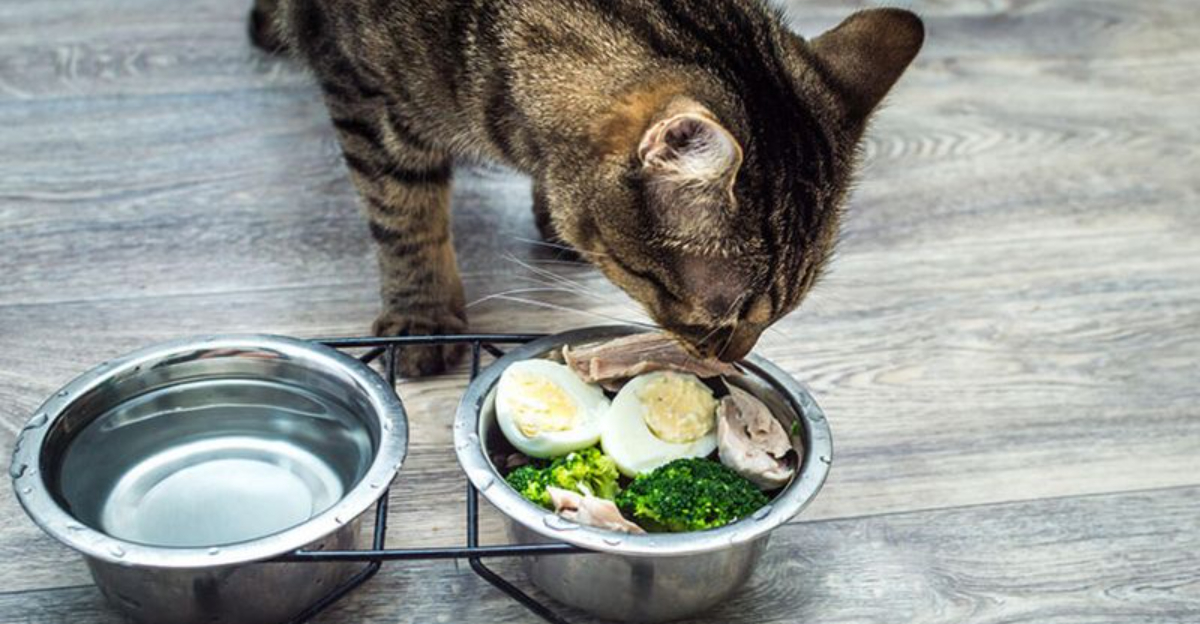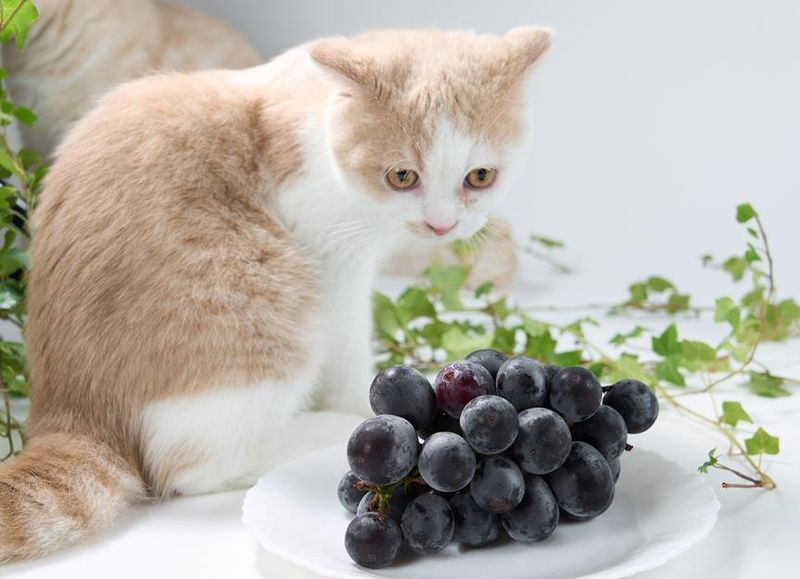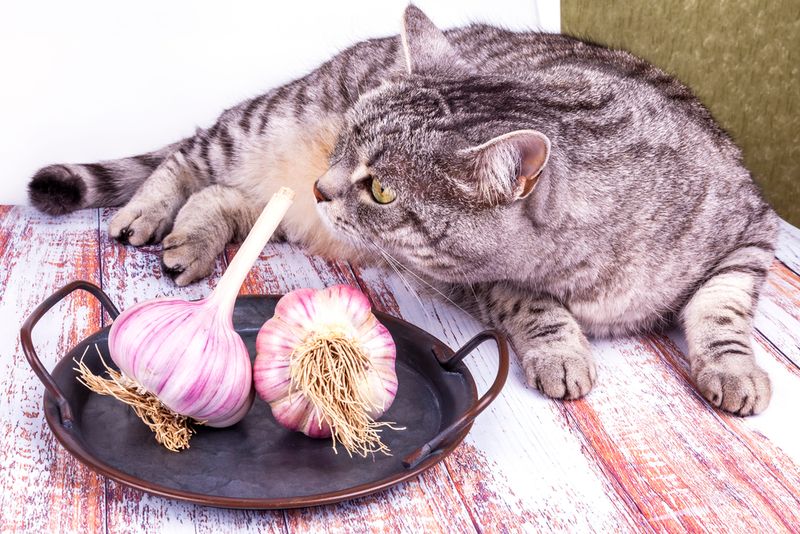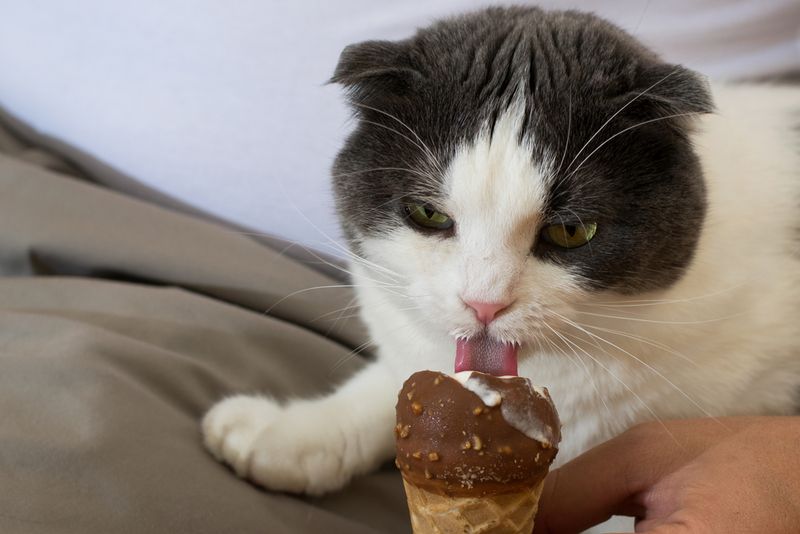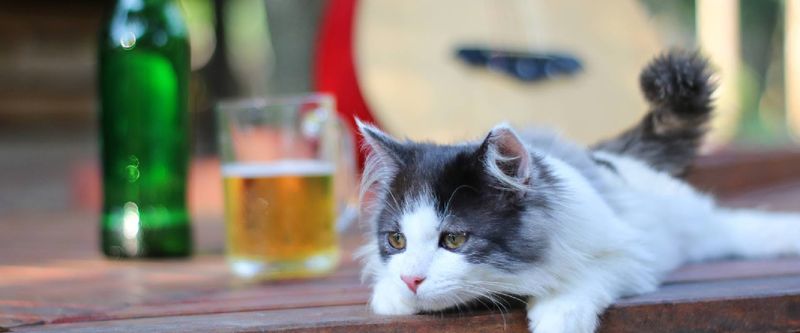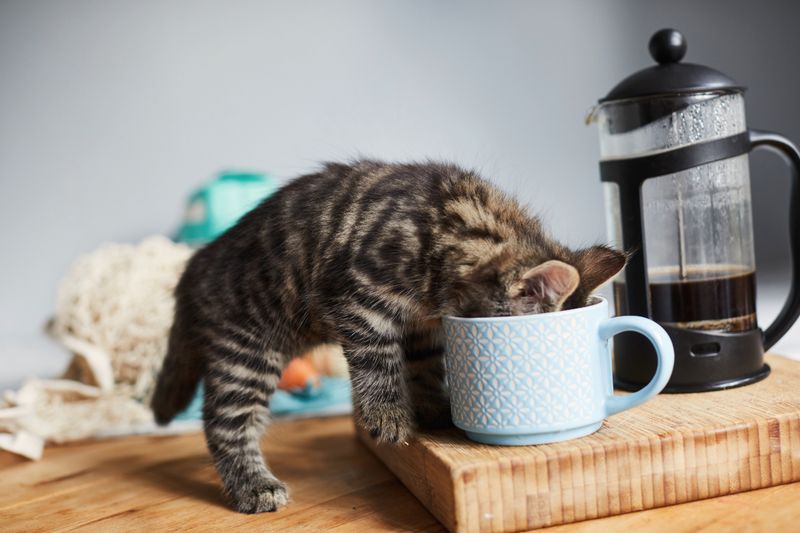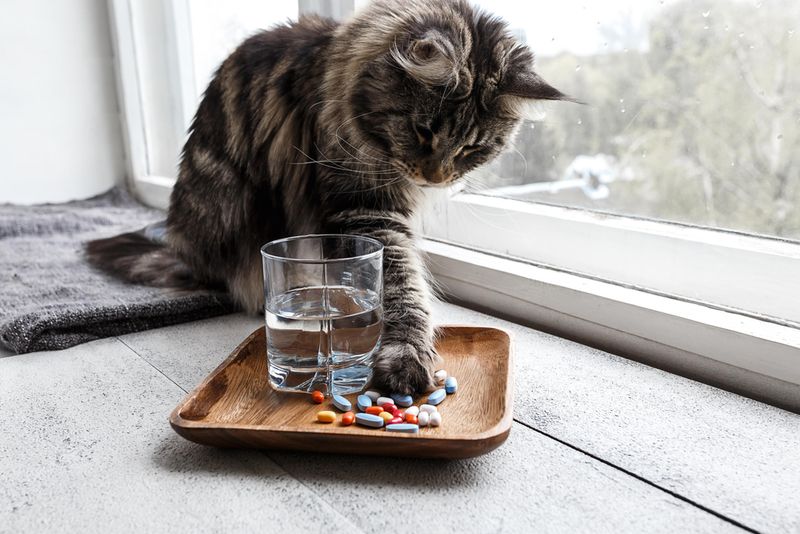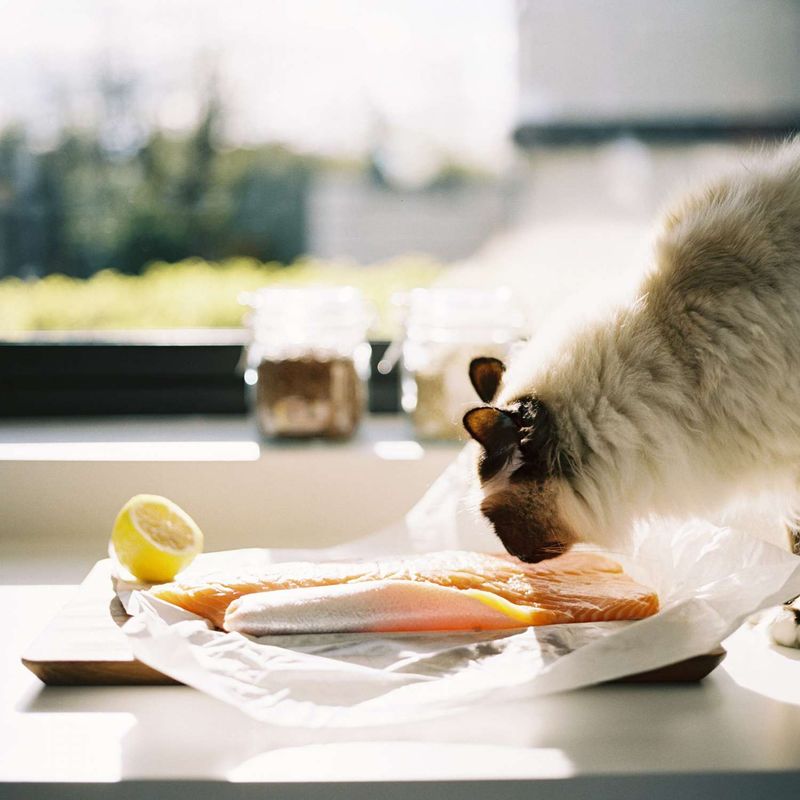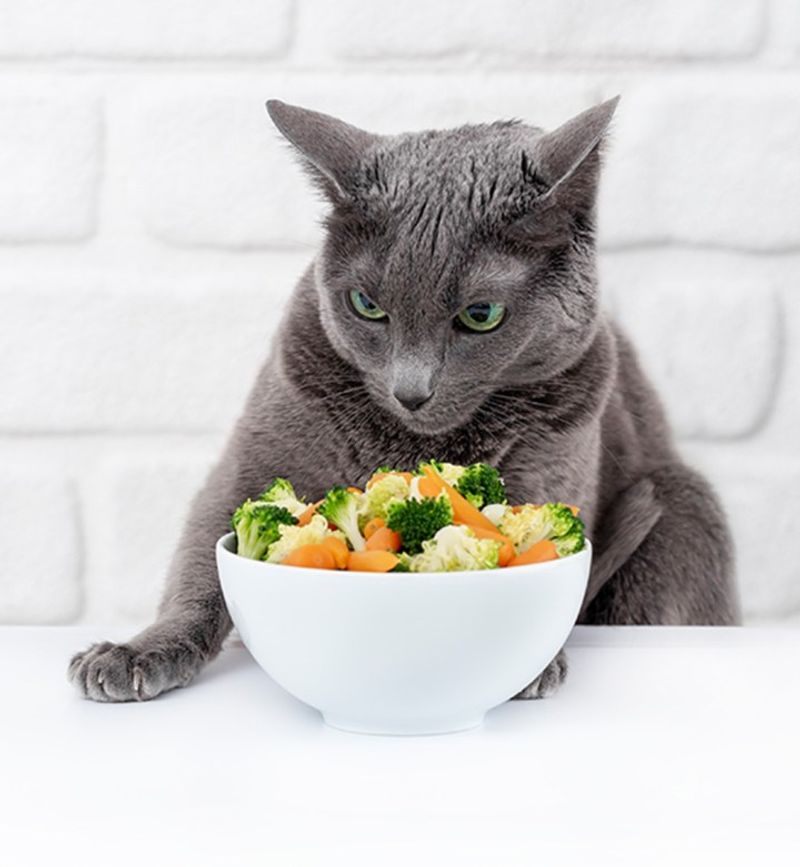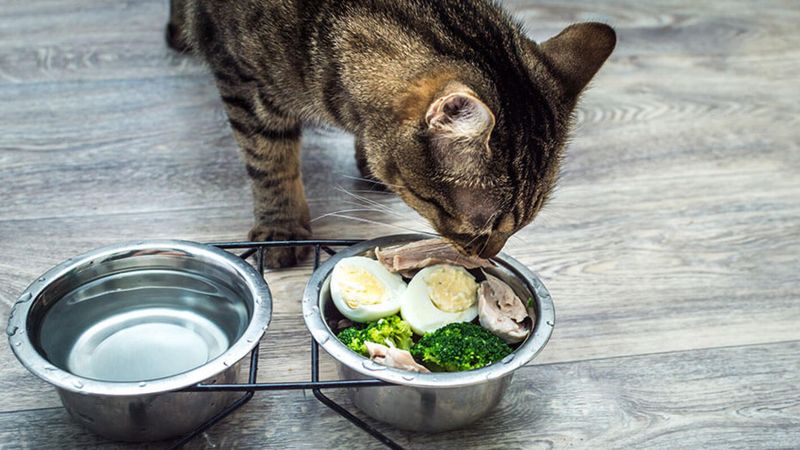📖 Table of Content:
Cats are naturally curious, especially when it comes to what’s on the table or in a bowl nearby. Their interest in human food can lead to unintended consequences if the wrong items are consumed. Not all that smells or tastes good to them is safe for their health.
Some foods that appear harmless at first glance can actually pose serious risks to a cat’s well-being. Ingredients commonly found in kitchens may lead to digestive issues, toxicity, or long-term health problems. Recognizing these hidden dangers is key to keeping a cat safe and healthy.
On the flip side, certain foods can offer valuable nutrients and even support a cat’s overall wellness. Understanding which items are truly beneficial can help enrich their diet in a safe way. With the right knowledge, it becomes easier to support both their curiosity and their health.
1. Grapes and Raisins
Many pet owners are unaware that grapes and raisins can cause serious harm to cats. Even a small amount can lead to kidney failure. The exact toxic component is unknown, but symptoms like vomiting and lethargy can appear within hours. Always keep these fruits out of reach.
If your cat accidentally ingests them, it’s crucial to consult a veterinarian immediately. Quick action can prevent severe health issues.
Cats might be intrigued by the sweet scent, so be vigilant during snack times. Your vigilance is key to your pet’s well-being.
2. Onions and Garlic
Onions and garlic may add flavor to our dishes, but they’re a no-go for cats. These ingredients can damage a cat’s red blood cells, leading to anemia. Even small amounts can be toxic.
Symptoms might include weakness, vomiting, and breathing difficulties. It’s essential to ensure these foods are kept away from your feline’s curious paws.
Cooking doesn’t reduce their harmful effects, so avoid giving your cat any leftovers that might contain them. Safeguard your meals to keep your cat healthy and happy.
3. Chocolate
Cats, like dogs, are susceptible to chocolate poisoning. Chocolate contains theobromine, a compound that can be lethal to cats. Dark chocolate and baking chocolate pose the highest risk.
Initial symptoms include vomiting, diarrhea, and increased heart rate. In severe cases, seizures and even death can occur.
Keep all chocolate products securely stored and never share them with your feline companion. A simple oversight can have dire consequences. Prioritizing your cat’s safety is crucial when it comes to sweet treats.
4. Alcohol
Alcohol is dangerous for pets, including cats. Even a small amount can lead to severe intoxication. Cats are particularly sensitive to alcohol’s effects, which can include vomiting, disorientation, and respiratory issues.
Ingesting alcohol can quickly become life-threatening, so caution is paramount. Never leave alcoholic beverages unattended around pets.
If you suspect your cat has consumed alcohol, immediate veterinary attention is necessary. Keep your pet safe by enjoying your drinks responsibly and ensuring their environment is alcohol-free.
5. Caffeine
What energizes people can endanger cats. Caffeine, found in everyday drinks like tea and coffee, can trigger symptoms like hyperactivity, a racing heart, and muscle tremors in felines.
Cats are much more sensitive to caffeine than humans. Avoid leaving caffeinated beverages where your cat might investigate.
If your cat shows any signs of caffeine poisoning, such as restlessness or muscle tremors, contact your vet immediately. Keeping caffeinated products out of reach can prevent accidental ingestion and keep your cat safe.
6. Xylitol
This sugar substitute might be safe for humans, but it’s hazardous for cats. Xylitol can cause a sharp drop in blood sugar by prompting a quick insulin spike. Affected cats may experience symptoms like vomiting, coordination issues, or even seizures.
Immediate veterinary care is necessary if your cat consumes xylitol. Unlike dogs, cats are less likely to ingest sweet treats, but caution is still advised.
Always check labels for xylitol and ensure such products are stored safely. Your attentiveness can make all the difference in preventing a health crisis.
1. Cooked Chicken
Nutritious and tasty, cooked chicken is a cat-approved treat. It’s rich in protein and easy for most cats to digest. Make sure it’s served without any extra flavorings or ingredients.
Chicken can be an occasional treat or part of a balanced diet. Always ensure it’s cooked thoroughly to avoid any bacterial contamination.
Introduce cooked chicken to your cat’s diet slowly, observing any digestive reactions. This delicious treat can add variety to their menu while keeping them satisfied and healthy.
2. Salmon
Salmon is a nutritious option for cats, rich in omega-3 fatty acids and protein. It promotes healthy skin and a shiny coat. Cooking the salmon ensures it’s free from parasites and safe to eat.
Avoid giving your cat smoked or seasoned salmon, as additives can be harmful. Offer salmon in moderation as part of a balanced diet.
This delicious fish can be a delightful treat that supports your cat’s overall health. Monitor portion sizes to prevent weight gain and keep your pet fit and happy.
3. Pumpkin
A spoonful of pumpkin can go a long way for a cat’s digestive health. Packed with fiber, it aids in digestion and keeps hairballs at bay. Plus, its taste is often a hit with feline palates.
Serve canned pumpkin, free of added sugars or spices, to ensure safety. A small spoonful can make a big difference in your cat’s digestive health.
Introduce pumpkin gradually to observe any reactions. This nutrient-rich food can add variety and nutritional benefits to your pet’s meals. It’s a simple way to keep your cat feeling good inside and out.
4. Blueberries
Small, sweet, and safe—blueberries make a great occasional treat for cats. They’re rich in antioxidants that support immune health and are low in calories. The juicy pop can make snack time extra fun.
Offer blueberries fresh and in moderation. Too many can cause digestive upset, so it’s best to introduce them gradually.
This small fruit can be a great addition to your cat’s treat rotation. The colorful berries can also add a playful element to their diet, enhancing both taste and nutrition.
5. Spinach
This leafy green is full of vitamins that support feline wellness. Spinach contains A, C, and K, making it a nutritious addition to a balanced diet. Its fresh crunch can be appealing to some cats.
While healthy, spinach should be given in moderation, particularly for cats with urinary issues. Cooking the leaves can make them easier to digest.
By introducing spinach into your cat’s meals, you add a nutritious element that supports their health. Watching their reactions can help tailor portions to their preferences and needs.
6. Eggs
Eggs are a protein-rich food that cats can enjoy cooked. They provide essential amino acids and vitamins that support a cat’s growth and health. Serve eggs scrambled or boiled and without any seasoning.
Raw eggs pose a risk of salmonella, so always ensure they’re fully cooked. Offering eggs occasionally can diversify your cat’s diet and contribute to its nutritional needs.
Observing your cat’s reaction to eggs can help you determine the right portion. This versatile food can be both a treat and a supplement to your cat’s meals.
